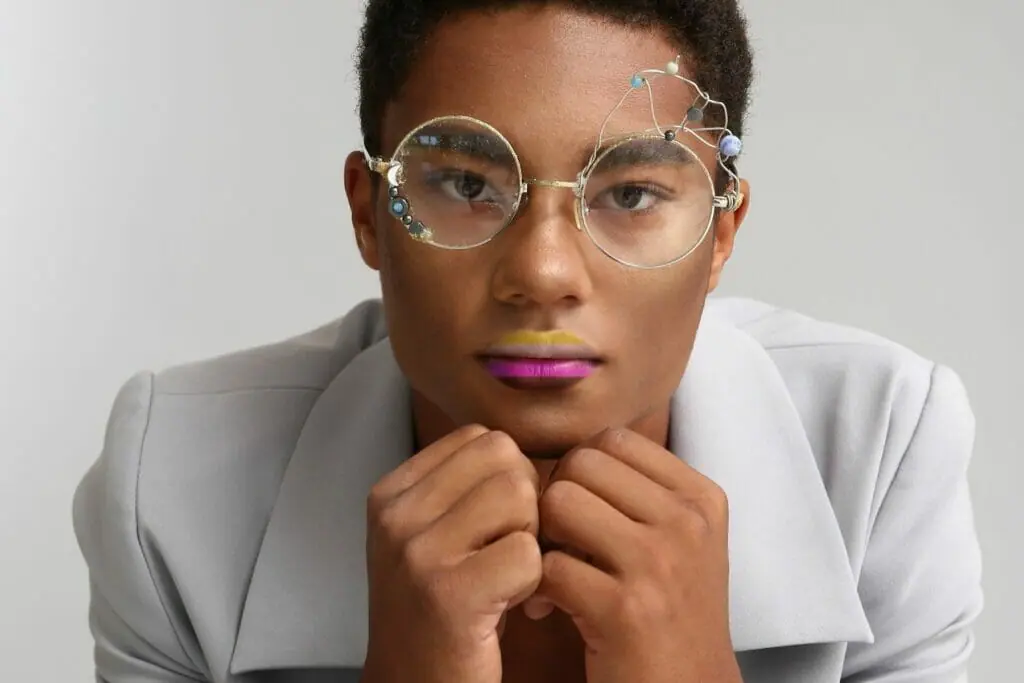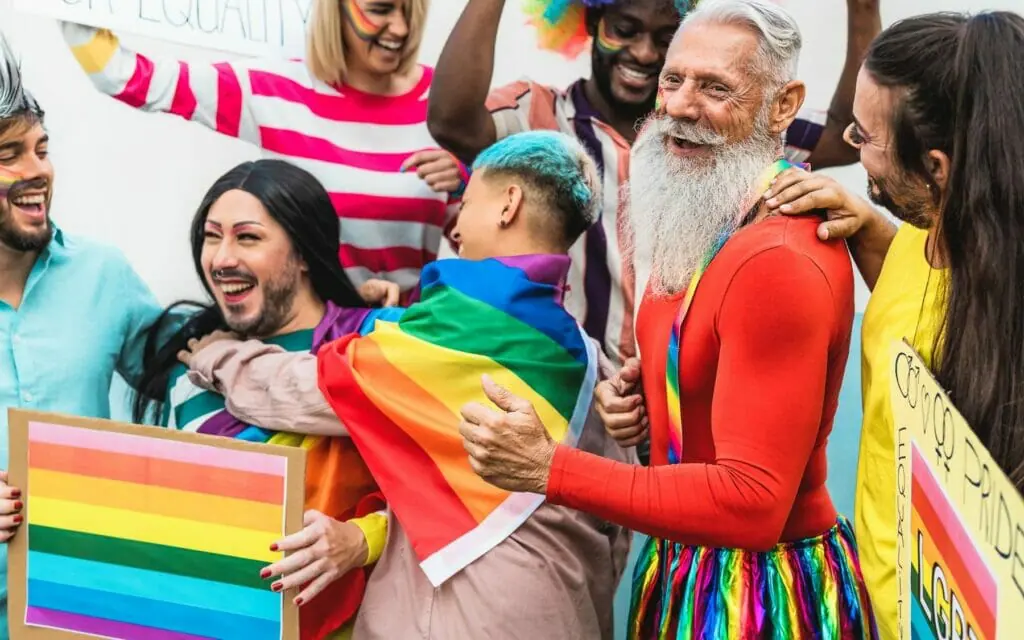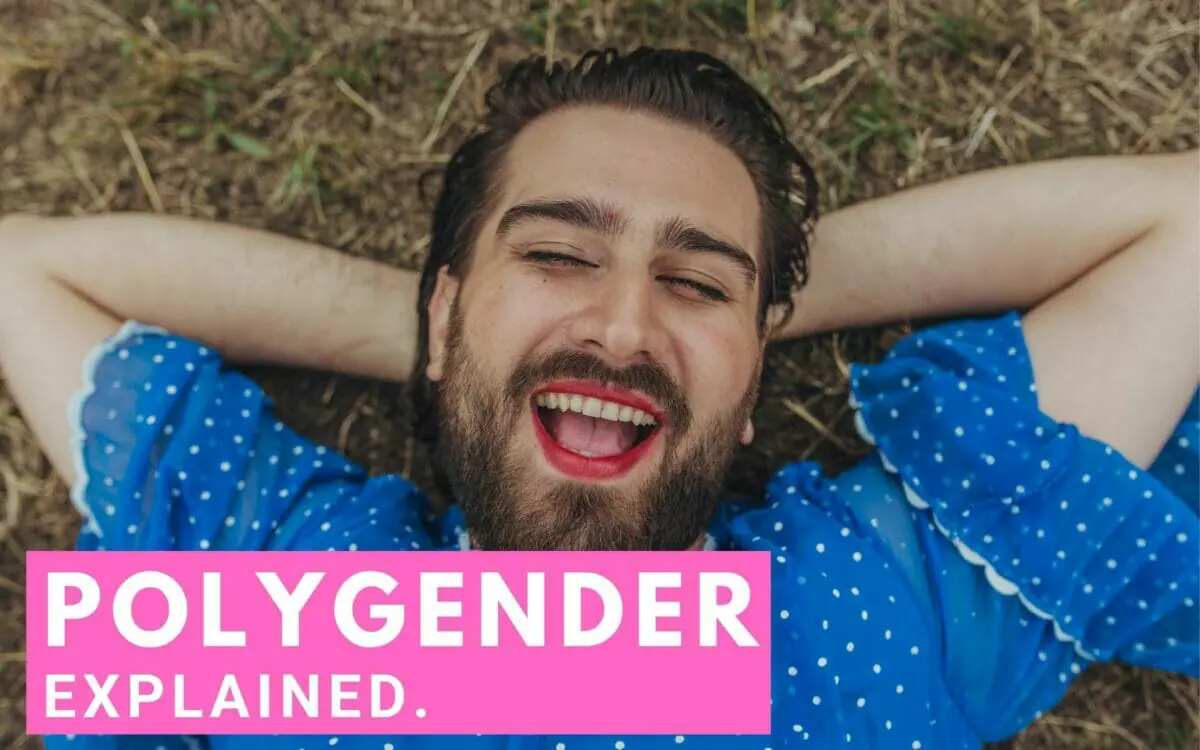Anyone can feel attached to or identify with a diversity of gender identities and/or sexual orientations. And as evermore definitions have been popularised over the years to embody the emotions and experiences of queer people, it can be hard to keep up.
If you are not totally absorbed in LGBTQ+ culture or the rainbow community, you may not appreciate these lesser-known sexual orientations and gender identities – most of which have a lack of representation in mainstream media.
One such term is polygender, so we are going to define and cover what does polygender mean, speak about the polygender pride flag, and then provide some tips to help you become a better ally to polygender people.
In this article we will cover...
- What Does Polygender Mean?
- The Polygender Pride Flag
- When is Polygender Pride Day
- Other Polygender Information to Help You Be a Better Ally
- Understand multigender identities and the oppression they go through
- Listen first if you don’t know the pronouns to use
- Don’t ask for their ‘real’ name
- Think about ‘outing’, disclosure, and confidentiality
- Respect the terminologies they use to describe their gender identity
- If someone is exploring or questioning their gender identity, be patient
- Challenge anti-transgender jokes and remarks even in LGB spaces
- Show support for all-gender public restrooms
What Does Polygender Mean?
Polygender is a nonbinary gender identity that refers to people who feel like they belong to more than one gender identity. For a polygender person, gender expression may be similar to multiple genders. The term polygender was first used in the transgender community on Sphere as an umbrella term for transgender individuals whose genders didn’t match the binary.
Polygender falls both under the transgender and nonbinary umbrellas. Polygender people experience several gender identities and some define being polygender as having more than one gender. Polygender people may have two genders (bigender), three genders (trigender), or more genders.
Polygender people have all these genders in a mix at the same time. Being polygender can also mean that someone’s gender changes from one to another at different times. When this happens, the word polygender is used interchangeably with genderfluid.
Polygender people can also identify with other nonbinary identities such as transgender, nonbinary, and multigender. When a polygender experiences fluctuating identity over time or depending on the situation, they can identify as genderfluid.

The Polygender Pride Flag
There are many different pride flags symbolizing most queer identities, so it should come as no surprise there is a flag for polygender people to proudly fly.
The polygender flag features five stripes of different colors. From top to bottom, the colors are black, gray, pink, yellow, and blue. Black is for no gender, gray is for gendered, pink is for gender identities that are feminine, yellow is for nonbinary gender identities, and blue is for masculine gender identities.
When is Polygender Pride Day
Education, visibility, commemoration, and appreciation are all critical in promoting global acceptance and acknowledgment of queer identities and queer folx in general. And from experience, we know it is easier for polygender individuals to talk to friends and loved ones – and to feel the love – when a worldwide day for Poygender is observed. Not to mention it also helps foster awareness and increased sensitivities from society at large.
So, mark your calendar and do something special (even if it’s just a social media post!) for Polygender Pride Day next June 20th.
Other Polygender Information to Help You Be a Better Ally
No polygender experience is identical to another. You can’t tell whether someone is polygender by looking at them, observing their personality, or their physical aesthetic. None of these characteristics can provide a clue as to how a person identifies, and this is as true for polygenders as it is for any gender or sexual orientation.
The first thing you should do as an ally to polygender people is to believe them when they tell you about their identity. Don’t try to argue them out of it or make the mistake of thinking you could know more about how they feel than they do. It could also help if you worked on your mindset. Working on your attitude means you challenge your concept of gender, sexuality, and sex.
After all, if you have any issues with understanding polygendered people, the root cause is bound in your understanding of gender and sexuality – not theirs. Educating yourself (as you are by reading about what does polygender mean?) is an excellent first step to increase your awareness and not make your lack of knowledge in this area a burden on them.
There aren’t any explicit rules or guidelines, but here are some thoughts on how you can be a better straight ally and support a loved one as you discover what it means to be polygender.

Understand multigender identities and the oppression they go through
When one is multigender, or specifically polygender, it means they’ve gone against what society has taught us as the exclusivist and hierarchical gender binary. At the very least, this means that multigender people experience psychological and social oppression. Multigender people are often dismissed, trivialized, made to feel invisible, and often othered.
Polygender individuals suffer some forms of body terrorism, micro-aggressions, and stigmatization. When polygendered people talk about their experiences of gender, they are questioned every day.
As an ally, it’s important to understand that the extent to which polygender people are oppressed is extremely high. Once you understand these oppressions, you should question your own privileges and be able to stand up for polygender people in need.
Listen first if you don’t know the pronouns to use
If you aren’t sure about the pronouns someone uses, it’s better to listen to what pronouns other people are using when they refer to them. If it’s someone who knows the person you want to address well, they should know the right pronouns. If there’s no one around, introduce yourself to the person using your pronouns.
For example, you could say, ‘Hi, I’m Jen and I use the pronouns she/her. How about you?’ As you use the person’s pronouns, encourage the people around you to do the same. If you use the wrong pronouns, apologize as fast as you can and them move on. Don’t make it a big deal because you will make them uncomfortable.

Don’t ask for their ‘real’ name
When someone is polygender and transgender, being associated with the name they were given at birth can cause them extreme anxiety. Sometimes, this could be the part of their past they don’t want to remember. Allow them the comfort of choosing a name they’d be proud to be associated with.
If you know the name they were given at birth, there’s no reason for you to use it if they aren’t unless they give you permission to. “Deadnaming” is the use of this birth or other former name without the person’s consent. Deadnaming may be accidental but it is often used to intentionally dismiss, deny or reject a person’s gender identity. And a good ally would never do that.
And if they’ve gone through a transition, don’t share their ‘before’ photos unless you have permission from them. Being considerate of other people’s choices and preference is a huge part of being a better ally.
Think about ‘outing’, disclosure, and confidentiality
While some people might be ok with disclosing their gender history, others aren’t. Such information is usually personal and it’s up to an individual to decide whether or not they want to share it with others. If you are aware of someone’s gender history, there’s no reason for you to share this information, or gossip about them.
Doing this is an invasion of someone’s privacy and could have some negative effects on them especially if they come from an environment that doesn’t accept gender diversity. Polygender people run the risk of losing friends, housing, jobs, or their entire lives when some people discover their gender history.

Respect the terminologies they use to describe their gender identity
Like other transgender people, polygender individuals can use a variety of terms to describe their experience with gender. If they use a specific term to describe themselves at a certain time, it’s important to respect them.
If someone is still learning about gender and isn’t sure about the label that suits them most, allow them the space and time to figure such things out for themselves. Allow polygender people to self-define in the same way you would.
If someone is exploring or questioning their gender identity, be patient
When someone is exploring or question their gender identity, they may take some time to figure out what fits and what doesn’t. For instance, they might use a pronoun or a name for a while and then later decide that it doesn’t fit them and change to something else.
If they do, try to be as considerate as you can and respect the changes they make concerning how they should be addressed.

Challenge anti-transgender jokes and remarks even in LGB spaces
Since polygender people are under the transgender umbrella, you (sadly) might hear some negative comments about them from both anti-LGBTQ people and LGB individuals.
Even though someone is a lesbian or gay, this doesn’t give them the right to make fun of polygender people. No matter who says these jokes, question them and challenge them regardless of who makes them.
Show support for all-gender public restrooms
Some polygender people might not feel like the signs on restroom doors apply to them. As an ally, you can show your support by encouraging your workplace, school, or other agencies to adopt single-user, unisex, or all-gender restrooms.
Make it clear that polygender people are welcome to make use of the restrooms they find comfortable occupying.





